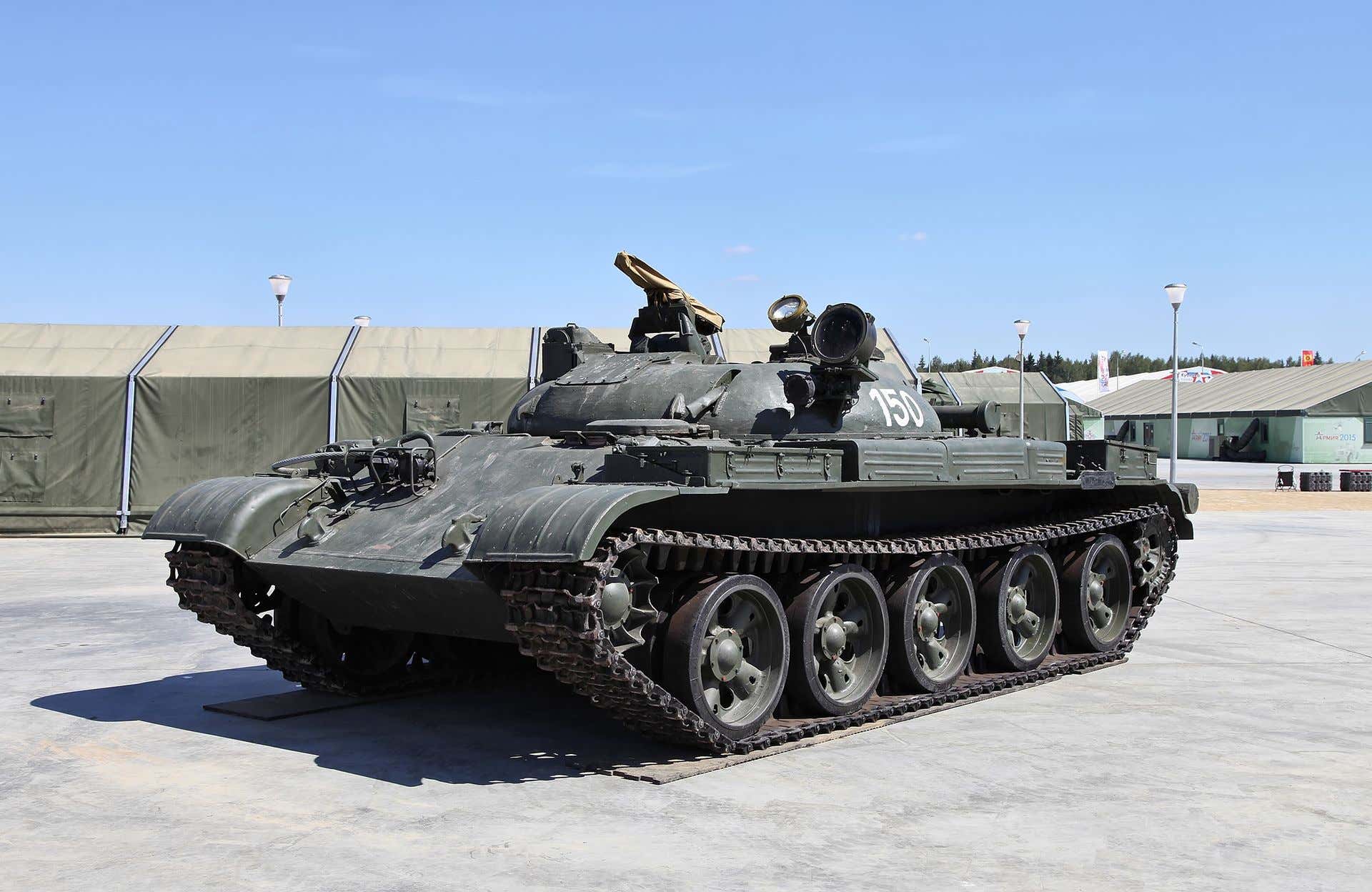As the ongoing Russia-Ukraine war showcases the failures of modern armored vehicles against anti-tank munitions and drone strikes, a video has emerged of what seems to be an extensive restoration effort on a Soviet-era heavy tank, the Object 279, at the Kubinka Tank Museum outside Moscow which houses an unrivaled collection of armored vehicles in between 1917 – present day.
With a diesel roar and clouds of smoke, the big tank can be seen moving forward very slowly before a brief but noisy test run on the museum grounds.
While the details of the restoration work and the time it has taken remain unknown, reports suggest that efforts have been taken to address the engine and running gear, as well as the hull and turret, which can be seen as partly painted in red primer ahead of a likely complete respray.
Most sources indicate that this is the only surviving Object 279 tank anywhere in the world.
Back in the 1950s after the end of World War II and the entrance of the atomic weapons used in Japan, the Soviet Union, the antecedent of both Russia and Ukraine, produced some of the most impressive tank designs including Object 279 – considered as the only armorer vehicle of its time that could withstand the shock waves generated by a thermonuclear device.
Outdated Soviet Tanks
By the mid-1950s, the Soviet Union already had four types of heavy tanks which all had certain disadvantages, such as the IS-2 which was outdated; the IS-4 which was too expensive to manufacture; the IS-3 which exhibited poor performance; and the T-10 which is not well protected against modern anti-tank weapons.
So, the Main Armoured Directorate of the Soviet Ministry of Defense needed an ‘ideal heavy tank’ with a mass of no more than 60 tons and a 130-mm cannon as its main armament that would combine the best features of previous models.
The development work began in 1957 in the office of the Leningrad Kirov and Chelyabinsk Tractor Plants, and three heavy tank prototypes were developed until 1959 which included, “Object 770” from Chelyabinsk, “Object 277” from Leningrad and “Object 279” from Leningrad.
Object 279 produced by the team headed by L. S. Troyanov was a new and most unusual development in the history of world tank design.
It featured an unusual undercarriage of four sets of tracks divided into two pairs with each pair mounted on a longitudinal hollow beam on either side that also acted as a fuel tank for the engine.
These tracks were more or less equally spaced under the hull to spread the weight of this heavy tank equally over a large surface area and this allowed for a really low ground pressure of around 8.5 pounds per square inch (PSI) as compared to the American M48 Patton, for instance, that had a ground pressure of around 12 PSI.
This allowed Object 279 to move without difficulty over swampy, soft ground, and even across tree stumps, unlike other heavy tanks which were traditionally cumbersome vehicles, best suited to flat terrain.
Thick Armour
The new heavy tank was supposed to have armor thickness of 10.6 inches to the front and 12.6 inches to the side but there was also the weight constraint of 60 tons which led to a very unique and impressive armor design that consisted of a cast structure of four massive parts of varying slope and thickness – ranging from 1.6 to 11.8 inches – connected by welding.
This arrangement helps deflect armor-piercing and shaped-charge ammunition, and it was also expected to make the tank much less likely to flip over in a nuclear blast. The hull was also surrounded by an additional elliptical shield intended to trigger high-explosive anti-tank (HEAT) projectiles, which do not rely primarily on the kinetic force for penetration.
Powered by a 16-cylinder, 1,000-horsepower diesel engine, the Object 279 is able to make a top speed of 34 mph and its range, with a single refueling, is 186 miles.
The armament of the tank consists of a 130mm M-65 rifled gun with 24 rounds of ammunition and coaxial 14.5mm heavy machine gun. The loading of the gun is semi-automatic, providing a rate of fire of up to 7 rounds per minute.
The gun also has a stabilization system for accurate firing on the move, allied with an optical rangefinder, automatic guidance system, and a night-sight incorporating an infrared searchlight which is very much state-of-the-art features for its period.
However, the design was too unusual and therefore too “raw” having numerous deficiencies such as worse than expected agility, issues with its running gear, the complexity of repair and maintenance, and the complexity of manufacturing plus the impossibility of reducing the overall height of the tank.

Also, after 1960, heavy tanks began to look like relics of a previous age of armored warfare and the medium tanks which were more agile and faster became increasingly relied upon on the battlefield
The work on Object 279 was halted after Soviet Premier Nikita Khrushchev categorically banned the adoption of any tanks weighing more than 37 tons in July 1960.
- Written by Tanmay Kadam/EurAsian Times Desk
- Contact the author at etdesk@eurasiantimes.com
- Follow EurAsian Times on Google News




